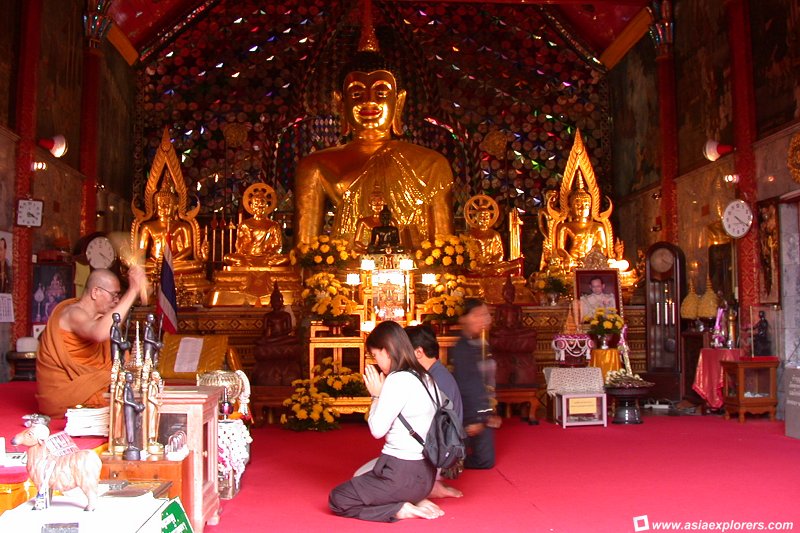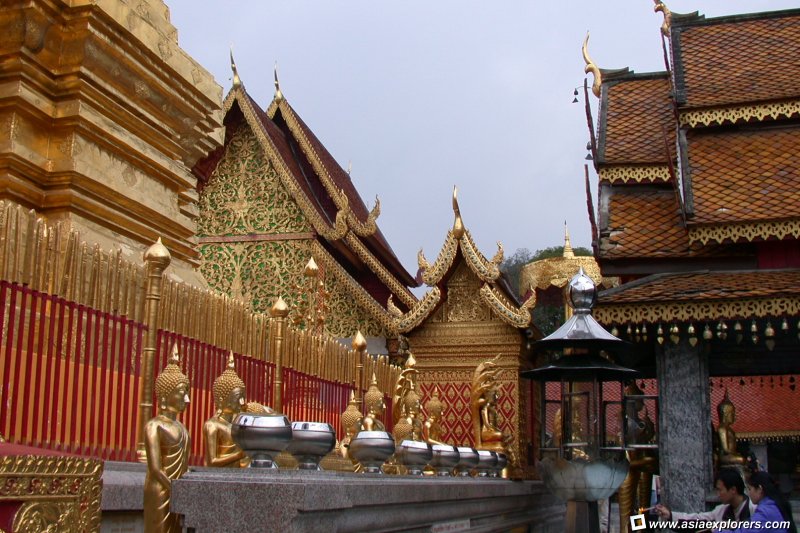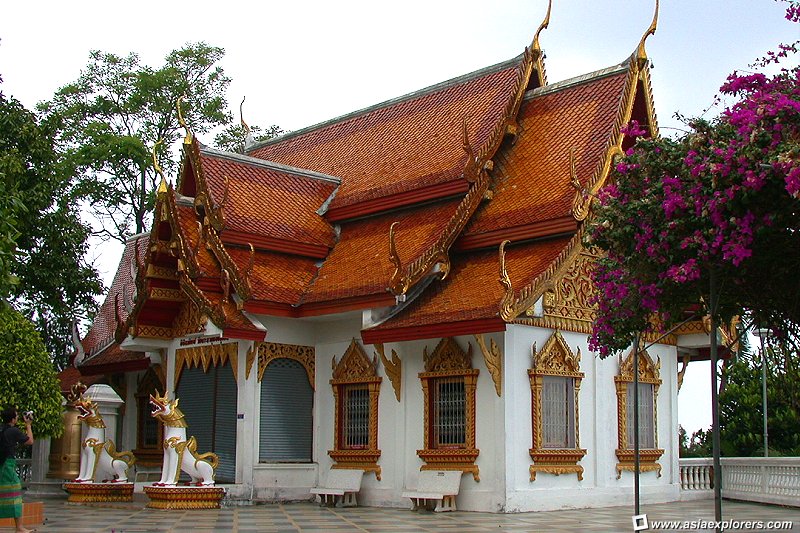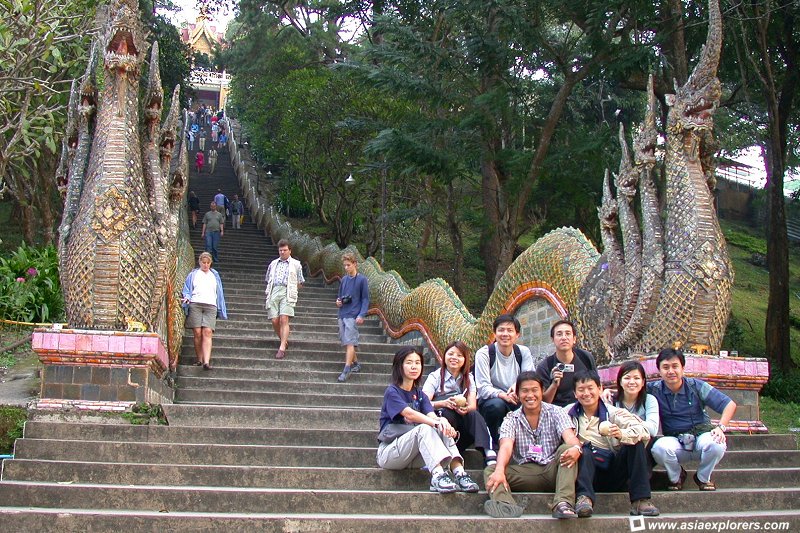 Main archway at the top of the naga staircase. (25 December, 2002)
Main archway at the top of the naga staircase. (25 December, 2002)
Wat Phra Boromathat Doi Suthep, better known among most tourists as simply Wat Doi Suthep, is one of the most important Buddhist temples in Chiang Mai. Technically Doi Suthep refers to the 1601-meter mountain on which the temple straddles its side. Doi Suthep and neighbouring 1685-meter Doi Pui are sacred mountains. The Thais consider them the home of Chiang Mai's guardian spirits Pu Sae and Ya Sae. It was in fact due to the auspicious location of Doi Suthep that the site for the city of Chiang Mai was chosen.
Wat Phra Boromathat Doi Suthep is located about half way up Doi Suthep. From here, you can get a panoramic view of the city below. The establishment of Wat Phra Boromathat Doi Suthep was the result of an accident. When a Buddhist relic was being transferred from Sukhothai to Wat Suan Dok in 1371, it was accidentally broken into two pieces. As it was inauspicious to enshrine both pieces at Wat Suan Dok, a site had to be chosen for the second piece.
 The shrine at Doi Suthep. (25 December, 2002)
The shrine at Doi Suthep. (25 December, 2002)
To solve this "problem", the sacred relic was placed on a white elephant, and the elephant was let loose. The pachiderm climbed half way up the mountain, stopped, and would climb no more. (According to a more detailed account, the elephant walked for three days, stopping three times at lower peaks before arriving at the level top of a spur, where it trumpeted three times, turned around, knelt, and died.)
A 7-metre chedi was built here to enshrine the broken relic. Around the end of the 15th and beginning of the 16th Century, the chedi was enlarged to its present height of 16 metres, and took on its present octagonal form.
 Alms bowl in front of the sacred enclosure. (25 December, 2002)
Alms bowl in front of the sacred enclosure. (25 December, 2002)
My friends and I visited Wat Phra Boromathat Doi Suthep when we were Chiang Mai. We arrived by van. After parking we have two options, to climb the stairs, for free, or to take the funicular tram, for a fee. Cheapskates that we were, there's little to guess which option we chose.
The staircase is long and steep, and flanked on either sides by undulating naga-makara balustrades. The famous golden chedi is surrounded by a cloister. This sacred enclosure owes its present form to renovations done in the beginning of the 19th Century. Buddha images line the cloister.
The chedi is sheathed in gilded copper plates and surrounded by a railing which is painted red with gilded tips. The purpose of the railing is to maintain its sanctity. At the corners of the railings are Burmese-style filigreed chat (sacred parasols), with their columns made to look like bamboo.
 One of the viharns at Doi Suthep. (25 December, 2002)
One of the viharns at Doi Suthep. (25 December, 2002)
 Here we are having a photo with our guide. (25 December, 2002)
Here we are having a photo with our guide. (25 December, 2002)
 Latest updates on Penang Travel Tips
Latest updates on Penang Travel Tips
 Map of Roads in Penang
Map of Roads in Penang
Looking for information on Penang? Use this Map of Roads in Penang to zoom in on information about Penang, brought to you road by road.Disclaimer
Please use the information on this page as guidance only. The author endeavours to update the information on this page from time to time, but regrets any inaccuracies if there be any.
Copyright © 2003-2025 Timothy Tye. All Rights Reserved.

 Go Back
Go Back